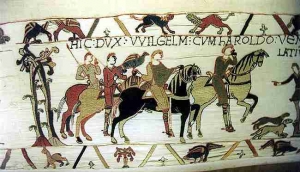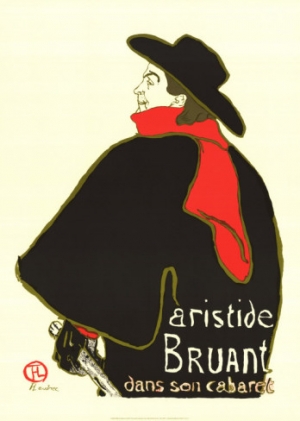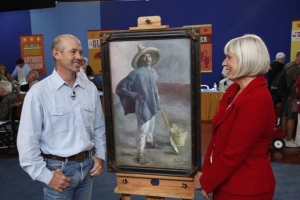|
Displaying items by tag: lost
Stolen in 1982, a large French pastoral tapestry dating to the mid-18th century has been returned to its original home after more than three decades and now hangs in a château in Normandy.
The Art Loss Register, the privately run database of stolen and looted art, spotted the wall hanging in the catalogue of a London auction house in February 2014, but the find has only recently been made public after follow-up investigations.
Almost two dozen works of art, including a Robert Ballagh piece, are still missing from Leinster House almost three years after they were first reported as lost, the "Sunday Independent" can reveal.
There are concerns that some may have been stolen. It is feared that others may have been moved amid the upheaval within Leinster House following the largest ever changeover of TDs following the 2011 General Election.
An official investigation as to the status of the missing artworks remains ongoing, according to the Office of Public Works (OPW), which has responsibility for managing the collection of more than 720 works of art.
A long-lost painting by the Spanish Baroque artist Sebastián de Llanos Valdés, which was missing for over 70 years, has been discovered in the UK, after an unidentified individual tried to consign "Penitent Maria Magdalena" to Christie's, according to a DPA report. However, the Staatliche Museum Schwerin, which owns the painting, had previously entered the artwork into Germany's centralized "Lost Art" database for stolen artworks. Since the attempted sale the museum and auction house were able to negotiate the work's return; with the individual who found and consigned the Valdés reportedly being offered a reward by way of compensation.
The artist was born in Seville, and was a pupil of Francisco Herrera the Elder, he worked chiefly for private patrons. In 1660, the artist actively supported Bartolomé Esteban Murillo in founding the Academia de Bellas Artes (Academy of Art), afterwards making frequent donations of oil and other materials for the students' use.
An extremely rare Fabergé statuette depicting a royal Russian bodyguard was recently discovered in an attic in Rhinebeck, NY. The work, which was believed to have been lost, is one of 50 sculptures in semiprecious stones and gold produced by the Fabergé workshop.
The statuette was acquired by a collector from the dealer and industrialist Armand Hammer in the 1930s and re-emerged this summer complete with original receipts when a descendant’s estate was emptied. The work depicts Nikolai N. Pustynnikov, bodyguard to Empress Alexandra, the wife of Nikolai II, Russia’s last Tsar.
Stair Galleries in Hudson, NY will auction the work on October 26; it is expected to sell for $500,000 to $800,000.

The descendants of a Parisian art dealer are demanding that the Henie Onstad Art Center near Oslo, Norway return Henri Matisse’s (1869-1954) Blue Dress in a Yellow Armchair (1937) to them. Nazis seized the painting from its owner, Paul Rosenberg, prior to the outbreak of World War II. Ultimately, Rosenberg, one of the most prominent French art dealers and a personal friend of Pablo Picasso and Matisse, fled to New York and survived the war.
The painting in dispute has been a celebrated part of the Onstad’s collection since the museum was established in 1968. The work was donated to the fledgling institution by art collector Niels Onstad and his wife Sonjia Henie, an Olympic figure skater. Museum Director Tone Hansen attests that Onstad and Henie bought the painting from the Parisian Galerie Henri Benezit in 1950, unaware of its troublesome provenance. Hansen was unaware that Nazis had stolen the painting until the Art Loss Register, an organization that tracks lost and stolen paintings, notified him in 2012.
Art Registry documents show that Rosenberg purchased Blue Dress in a Yellow Armchair directly from Matisse in 1937. Following World War II, Rosenberg attempted to re-establish his business and tried to recover the 400+ works that had been taken from him by the Nazis. The painting was marked on Rosenberg’s personal documents as missing after the war. He also reported the painting missing to French authorities in 1946.
While Rosenberg’s heirs hope that the painting will be returned to their family, Norwegian law states that if a person has had an item in good faith for over 10 years, they are deemed the rightful owner. However, the argument is in contrast to the Washington Conference Principles on Nazi-Confiscated Art, which Norway is a part of.

Residents of Alderney, the northernmost of the British Channel islands, recently came together to complete the Bayeux tapestry, an embroidered cloth measuring 230 feet from the 1070s. The original tapestry is believed to have been commissioned by Bishop Odo of Bayeux, the half brother of Duke William II of Normandy, and was sewn by English needle-works in either Winchester or Canterbury over a ten year span.
The Bayeux Tapestry is comprised of 50 scenes depicting the events leading up to the Norman conquest of England at the Battle of Hastings, where Duke William II defeated King Harold II of England. However, the tapestry ends before the coronation of William in London in 1066, leading experts to believe that the embroidery had lost its final panels over the centuries.
Hundred of people from Alderney have contributed to the completion of the Bayeux tapestry. Designed by artist Pauline Black, the project was overseen by Kate Russell, an American who lives on the island. Prince Charles and Camilla Parker Bowles even added a few stitches while on a visit to the Channel Islands.
The completed Bayeux tapestry will go on display at the Alderney Museum later this year.

State Farm Insurance is suing French art dealer Alfred DeSimone for either discarding or losing an original lithograph by the colorful French artist Henri de Toulouse-Lautrec (1864-1901). The lost work, Artistide Bruant Dans Son Cabaret, 1893, was part of a series of three posters used to promote French cabaret singer and comedian Artistide Bruant (1851-1925) around Paris in the late 1800s. The lithograph remains one of Toulouse-Lautrec’s most recognizable images.
State Farm is seeking $103,000 in damages from DeSimone for the centuries-old lithograph, which was bought by the insurance company’s client, Thomas Rosensteel, in 2006. Rosensteel purchased the work as an investment, but never ended up hanging it. While looking for a buyer, Rosensteel gave the lithograph to DeSimone for safekeeping, agreeing to pay him a fee once the work was sold. Rosentsteel found a buyer in 2010 and when he went to pick up the work from DeSimone, it was missing. DeSimone claims that the lithograph may have been put in a mailing tube and either sent to someone else or discarded. Rosensteel filed an insurance claim with State Farm who paid $103,109 to him; the company is now seeking compensation for the claim.
DeSimone, who has been experiencing financial troubles, has not been charged with any criminal wrongdoing in the Toulouse-Lautrec case. A judge will review the lawsuit on April 25, 2013.
On Monday, December 10, Zurich, Switzerland’s largest city, admitted to losing track of 5,176 works of art. The realization came after the city performed the first full inventory of its collection that is comprised of 35,000 important pieces in nearly a century. Among the missing objects were approximately 1,400 original works including a painting by Swiss-born architect and pioneer of modern design, Le Corbusier.
Officials expect to locate most of the missing works as the city’s collection is often sent out for exhibitions and is currently spread across more than 500 locations. Zurich’s vast holdings are worth about $130 million in total, but city officials claim the missing works only account for a fraction of amount.

Starting January 7, 2013, Antiques Roadshow will kick-off its 17th season with three episodes filmed in Corpus Christi, Texas. While the series has a reputation for revealing hidden treasures to unassuming owners, the lost Diego Rivera painting that appears in the upcoming season is truly a rare find.
Earlier this year, Rue Ferguson inherited a painting bought by his great-grandparents in Mexico in 1920. He assumed it was worth some money, but when he took the piece to Antiques Roadshow during their stay in Corpus Christi, he was dumbfounded when he heard the painting was valued at $800,000 to $1 million.
Created by Rivera, one of the foremost Mexican painters of the 20th century, in 1904 when he was only a teenager, El Albani spent decades out of the public eye. While it is recorded in Rivera’s personal archive, the artist’s family could never locate the painting as it was hanging in Ferguson’s great-grandparents home. For nearly 30 years after Ferguson’s parents inherited the painting, they believed it to be a fake and kept it in storage. It wasn’t until the early 1980s that Ferguson’s father discovered the painting to be authentic and took it to be restored. The family donated the work to the McNay Art Museum in San Antonio, TX but Ferguson asked for the painting back when he learned it was no longer on public display.
After visiting Antiques Roadshow and learning just how important a work El Abani is, Ferguson decided to look for a museum that specializes in Rivera’s work and/or Latin American art to house the historic painting.
|
|
|
|
|